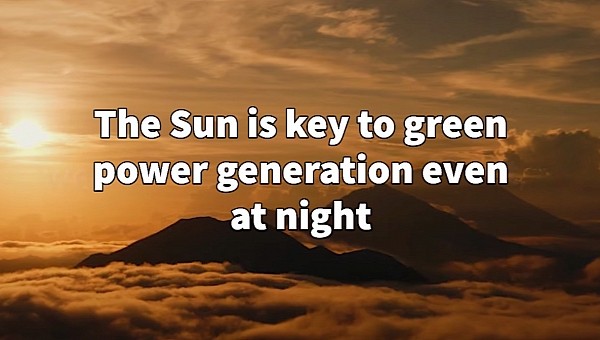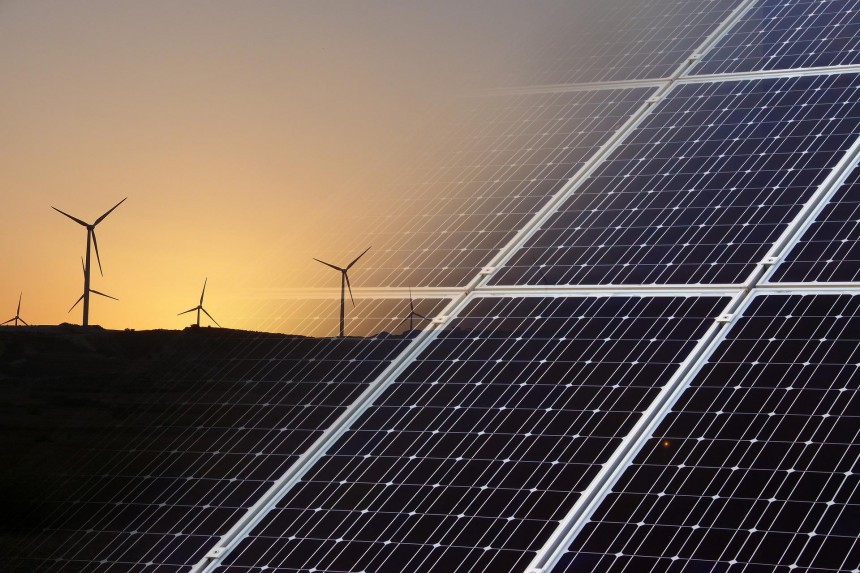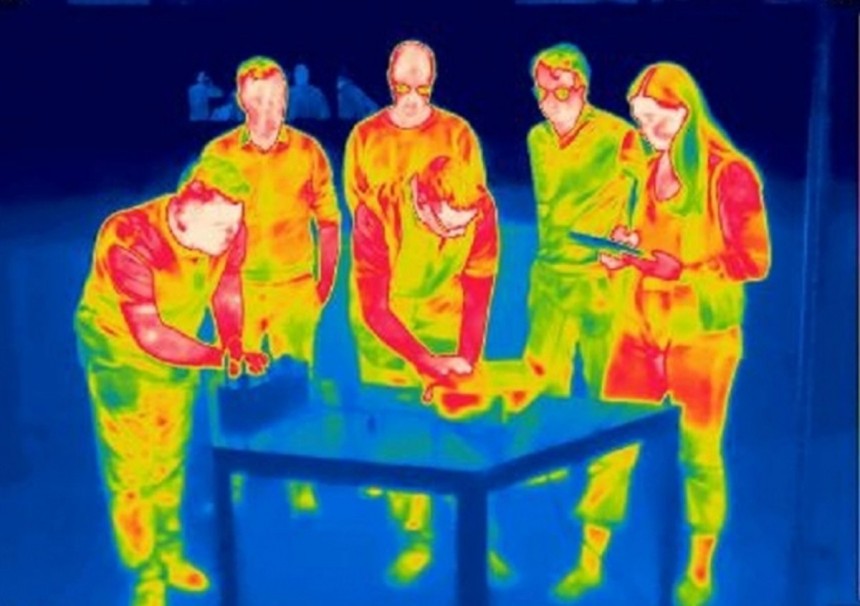Things are getting really bad here on Earth, as we humans keep generating the power our society needs through the most harmful of means. And things are about to get a hell of a lot worse in a very short time.
Earlier in March, a United Nations group going by the name Intergovernmental Panel on Climate Change made public a new and worrying report on the future of our planet’s climate. In a nutshell, it warns that if we do not change our ways of burning coal, oil and natural gas for our energy and mobility needs really soon, the bad things we're doing to the planet will become irreversible as soon as 2030.
We'll assume the findings are accurate, because we have no reason to doubt that, and then we can safely say we’re kind of screwed. Because there’s no way we as a civilization can (and will) switch to greener ways of power generation in under a decade.
This story is not about coming up with a solution for the issues in this disturbing report. It is however a story about a piece of tech that could have changed our world if only discovered sooner. A tech that could have a deep impact on our world still, even under these dire circumstances.
In May last year news of something generally described as a night-time solar technology broke. I know, it sounds a bit like a contradiction in terms, but allow me to explain.
We all know how one of the easiest and most widespread ways of generating green electricity is using solar panels. These things work in a simple way, essentially capturing the Sun’s light and turning it into electricity to be stored and used. The presence of light is thus key to a solar panel working as intended. It also means that during the night these things are utterly useless. But that doesn’t mean there isn’t enough solar energy to be harnessed during nighttime.
You see, as the Sun lights up our planet during the day, it also warms it. Warmth stays with our planet for as long as the star is high up in the sky. Then, during nighttime, it escapes back into space, in the form of infrared thermal radiation. And it’s this type of radiation we now know we can catch and turn into electricity.
A team from the University of New South Wales Sidney’s School of Photovoltaic and Renewable Energy Engineering proved that back in 2022. Sure, they barely managed to do that, but their discovery confirms our Sun can help us generate electricity even when it’s absent from the sky.
The team used a semiconductor device they call a thermoradiative diode for the task. It’s something made of about the same materials used to make night-vision goggles, meaning it was specifically designed to capture thermal radiation. But it did more than that, turning that into electricity and proving the idea works.
The process of doing so is called thermoradiative and it is, if you want, the complementary dark sibling of photovoltaics, which is the conversion of light into electricity. In the thermoradiative process, the devices emit infrared light into a colder environment, and the difference in temperature allows for the generation of electricity.
In last year’s experiment, the amount of electricity generated was absolutely tiny. To make tiny better to understand, the team says the energy generated by the diode was so small scientists were barely able to detect it: 100,000 less than what your average solar panel is capable of.
That’s bad news, true, but there’s a silver lining if you only know where to look. Just consider how present-day solar cells started out, with an efficiency of just 2 percent, and how they evolved to provide, most of them, around 20 percent efficiency. And that makes scientists confident the thermoradiative diode can evolve as well, at least to a point it could deliver one-tenth of the power of a solar cell. That may not seem like much in the grand scheme of things, but if we imagine entire farms of them, the overall impact could be significant.
There are huge advantages of such a technology, because it could allow us to capture the various states of the Sun’s energy day and night, no matter what. Separately, it could also open the door to bionic devices - think things like artificial organs - powered by the human body itself instead of batteries that need to be replaced.
The people working on the thermoradiative diode made public their findings in the ACS Photonics journal last year. They seem so confident of how life-changing it can be that they’re hoping “industry leaders will recognize the potential for the new technology and support its further development.”
So far, however, the idea seems to be ignored. About a year has gone by since this idea first came to light, and we’re yet to learn of any new developments. And that's too bad.
We'll assume the findings are accurate, because we have no reason to doubt that, and then we can safely say we’re kind of screwed. Because there’s no way we as a civilization can (and will) switch to greener ways of power generation in under a decade.
This story is not about coming up with a solution for the issues in this disturbing report. It is however a story about a piece of tech that could have changed our world if only discovered sooner. A tech that could have a deep impact on our world still, even under these dire circumstances.
In May last year news of something generally described as a night-time solar technology broke. I know, it sounds a bit like a contradiction in terms, but allow me to explain.
You see, as the Sun lights up our planet during the day, it also warms it. Warmth stays with our planet for as long as the star is high up in the sky. Then, during nighttime, it escapes back into space, in the form of infrared thermal radiation. And it’s this type of radiation we now know we can catch and turn into electricity.
A team from the University of New South Wales Sidney’s School of Photovoltaic and Renewable Energy Engineering proved that back in 2022. Sure, they barely managed to do that, but their discovery confirms our Sun can help us generate electricity even when it’s absent from the sky.
The team used a semiconductor device they call a thermoradiative diode for the task. It’s something made of about the same materials used to make night-vision goggles, meaning it was specifically designed to capture thermal radiation. But it did more than that, turning that into electricity and proving the idea works.
The process of doing so is called thermoradiative and it is, if you want, the complementary dark sibling of photovoltaics, which is the conversion of light into electricity. In the thermoradiative process, the devices emit infrared light into a colder environment, and the difference in temperature allows for the generation of electricity.
That’s bad news, true, but there’s a silver lining if you only know where to look. Just consider how present-day solar cells started out, with an efficiency of just 2 percent, and how they evolved to provide, most of them, around 20 percent efficiency. And that makes scientists confident the thermoradiative diode can evolve as well, at least to a point it could deliver one-tenth of the power of a solar cell. That may not seem like much in the grand scheme of things, but if we imagine entire farms of them, the overall impact could be significant.
There are huge advantages of such a technology, because it could allow us to capture the various states of the Sun’s energy day and night, no matter what. Separately, it could also open the door to bionic devices - think things like artificial organs - powered by the human body itself instead of batteries that need to be replaced.
The people working on the thermoradiative diode made public their findings in the ACS Photonics journal last year. They seem so confident of how life-changing it can be that they’re hoping “industry leaders will recognize the potential for the new technology and support its further development.”
So far, however, the idea seems to be ignored. About a year has gone by since this idea first came to light, and we’re yet to learn of any new developments. And that's too bad.










